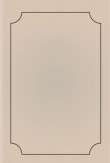قراءة كتاب The History of Insects
تنويه: تعرض هنا نبذة من اول ١٠ صفحات فقط من الكتاب الالكتروني، لقراءة الكتاب كاملا اضغط على الزر “اشتر الآن"
src="@public@vhost@g@gutenberg@html@files@10834@10834-h@images@0029b.png" alt="Another picture of a Silk Worm" tag="{http://www.w3.org/1999/xhtml}img"/>
This cut shews the appearance of the worm, which at first is very small and black. Its food is the leaves of the white mulberry: as it grows in size, at four different periods, it apparently sickens, and changes its skin, and finally, when full grown, it spins a ball of silk, called a cone, or cocoon, the thread of which is about three hundred yards long: in the centre of this ball the worm entombs itself, and experiences a change to a state called an aurelia, or chrysallis, as seen below the ball: from this aurelia, the moth that lays the eggs is hatched, and thus goes on the round of this animal's changes, or transmigrations.
They are natives of China, and were brought into Italy, above twelve hundred years ago; from thence into Spain; afterwards into France; much later into Germany and the northern countries; and some have been reared in the United States of America.
SAMUEL WOOD
Hereby informs the good little Boys and Girls, both of city and country, who love to read better than to play, that if they will please to call at his JUVENILE BOOK-STORE, NO. 357, Pearl-street, New-York, it will be his pleasure to furnish them with a great variety of pretty little books, with neat nuts, calculated to afford to the young mind pleasing and useful information. Besides many from Philadelphia, New Haven, and elsewhere, he has nearly fifty kinds of his own printing, and proposes to enlarge the number.
***END OF THE PROJECT GUTENBERG EBOOK THE HISTORY OF INSECTS***
******* This file should be named 10834-h.txt or 10834-h.zip *******
This and all associated files of various formats will be found in:
http://www.gutenberg.net/1/0/8/3/10834
Updated editions will replace the previous one--the old editions will be renamed.
Creating the works from public domain print editions means that no one owns a United States copyright in these works, so the Foundation (and you!) can copy and distribute it in the United States without permission and without paying copyright royalties. Special rules, set forth in the General Terms of Use part of this license, apply to copying and distributing Project Gutenberg-tm electronic works to protect the PROJECT GUTENBERG-tm concept and trademark. Project Gutenberg is a registered trademark, and may not be used if you charge for the eBooks, unless you receive specific permission. If you do not charge anything for copies of this eBook, complying with the rules is very easy. You may use this eBook for nearly any purpose such as creation of derivative works, reports, performances and research. They may be modified and printed and given away--you may do practically ANYTHING with public domain eBooks. Redistribution is subject to the trademark license, especially commercial redistribution.





